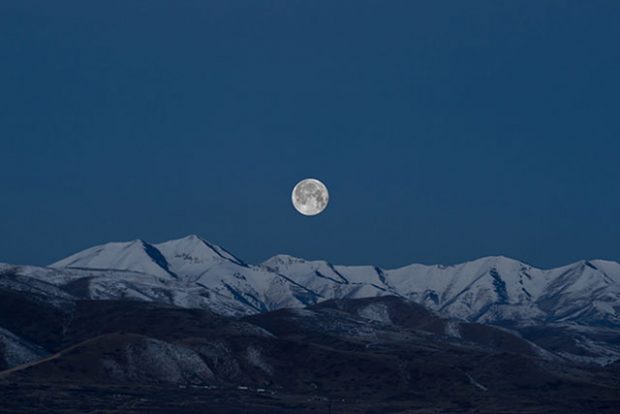The Search for Gravitational Waves
Physicist Nergis Mavalvala on the general theory of relativity, Hulse-Taylor system, and the way gravitational...

The origin of the Moon has long been the subject of debate. A giant impact between the proto-Earth and a forming planet called Theia is the most successful explanation for the Moon’s origin about 4.5 billion years ago. Stars like the Sun are born surrounded by a protoplanetary disk. About 4.6 billion years ago a giant cloud of gas and dust, the solar nebula, was disturbed possibly by the shock wave from a supernova and collapsed forming the Sun and the circumstelar disk in which the Earth formation happened.
The terrestrial planets formation process start with the collisional coagulation of microscopic dust grains into planetesimals with diameter in the range 10–100 km within such protoplanetary disk. The planetesimals are seeds for planet formation. After that, planetesimal’s collisions and mergers may form Moon- to Mars-sized objects called embryos and eventually planets. Giant impacts between embryos may occur during the last stage of the planetary system formation. In the solar system, planets as Venus and Earth experienced an embryos’ impact stage while Mercury and Mars remained as planetary embryos.
In the late stage, the decay of short-lived radioactive isotopes heat and melts the proto-planet, separating materials according to their density (differentiation).


The original theory suggests a relatively low-energy and low-angle impact, leaving the Earth mostly intact but melting the Theia completely. The impact generated a debris disk composed primarily of material from Theia, from which the Moon condensed. However, this version of the giant impact hypothesis fail to explain the Earth-Moon nearly identical isotopic composition, which indicates that the Moon must have been formed mostly from the Earth’s mantle material. It is unlikely that the Earth and Theia have the same isotopic composition, since they were formed in different parts of the solar nebula.
The Moon’s crust is depleted in volatile elements (elements that vaporize quickly as water) compared with Earth. Once the Moon forms from a debris disk around the Earth’s equator, it should stay in, or near, the Earth’s equator plane, instead of the five degrees inclination we can see. In addition, the Moon’s orbit lies unusually far away from Earth.

Recently, several works point to an extraordinary high-energy, high-angular-momentum giant impact model for the origin of the Moon.Computer simulations suggest that the collision was so violent that the entire mantle of the proto-Earth together with the Theia were vaporized. Ejects from the two body were mixed forming a giant cloud of debris and vaporized materials. Then, part of this material have fallen back into Earth and the Moon was formed by the remained materials that cooled and condensed in a debris disk. The Moon has a relatively small iron core, which is consistent with its formation by mixed materials from the Earth outer layers and Theia. Since the giant impact occurred after the Earth differentiation the iron was concentrated in the Earth core and there was little iron in its mantle. The similar isotopic composition of the Earth and Moon also is compatible with the Moon formation and the proto-Earth re-formation from Earth-Theia materials mixed by the giant impact.
The violent impact hit Earth in a such highly slanted angle that the Earth’s obliquity (angle between the equatorial and ecliptic planes) turned to about 70 degrees and that its spin was such that the day lasted to only two hours. The debris disk was formed close to the Earth’s equator plane and the Moon was born close to Earth, with zero inclination related to such circumterrestrial disk. In the several billion years since that collision, complex tidal interactions between the Moon, Earth and Sun have smoothed out many of these changes, resulting in the Earth’s 23.5 degrees spin axis tilt and in the unusuall 5 degrees of the Moon inclination related to the Earth’s orbit around the Sun, which we can see today. However, the Moon’s transition from the equatorial plane to the present plane was initially abrupt and chaotic with the Moon oscillating about the ecliptic until it reaches the current tilt. Due to tidal energy dissipation the Moon slowly pulled away from Earth and the rotation of both body slowed down.
Edited by Roman Varum

Physicist Nergis Mavalvala on the general theory of relativity, Hulse-Taylor system, and the way gravitational...

Professor Klaus Schilling on Cassini-Huygens space mission, adventures of Philae spacecraft, and autonomous re...

Harvard Lecturer Ronald Walsworth on methods of exoplanets discovery, reference for spectral measurements, and...